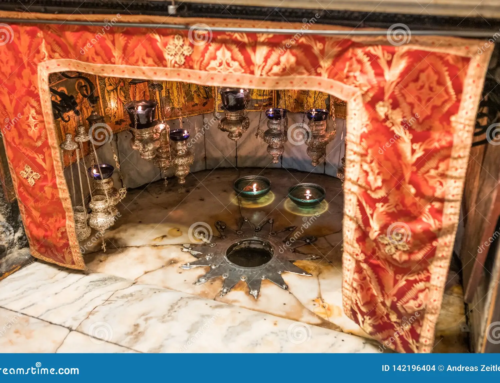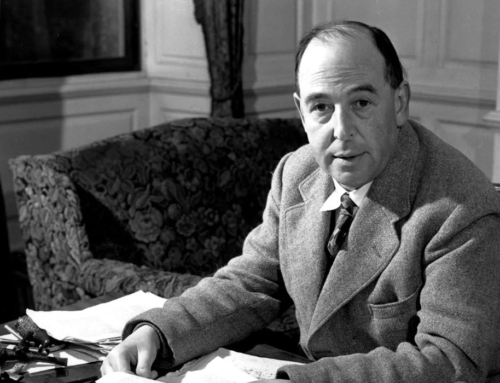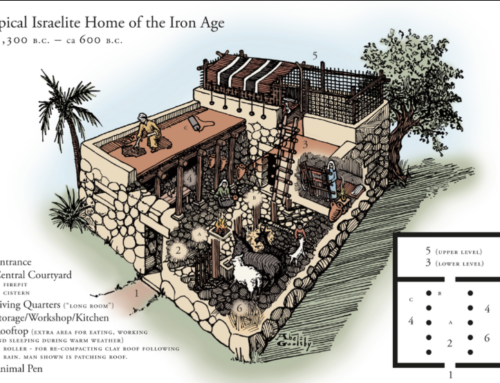Here’s my article on Pilate’s Ring published at TownHall.
Archeologists believe a ring unearthed in an archeological dig in Israel belonged to Pontius Pilate—the man who crucified Jesus.
London’s Independent reports that the ring was discovered fifty years ago during the excavations at Herodion—the magnificent palace of Herod, the king the wise men consulted when Jesus was born.
They believe the ring was his signet ring–as a sign of his authority and power, and used to seal official documents with his insignia in wax.
Pilate’s name was deciphered when it was photographed with a high-tech camera at the Israeli Antiquities laboratories. “Professor Danny Schwartz, from the Columbian School of Arts and Science said the name Pilate was very rare.”
Herodion—one of the most important archeological sites in Israel, was not only Herod’s palace, but an important fortress and the site of his tomb. His son, Herod Antipas would have occupied it after his father’s death, and it was Herod Antipas who colluded with Pontius Pilate and the Jewish religious leaders to bring about the execution of Jesus.
The discovery of Pilate’s ring is the latest in a series of astounding finds that confirm the historical basis of the New Testament. For many years scholars speculated that Pilate never existed since there was no documentation or archeological references to him. However, in 1961in a dig at Caesarea Maritima a limestone plaque was discovered that dates to the first century—the time of Pilate’s jurisdiction. Archeologists believe the city of Caesarea Maritima was the Roman prefect’s base and that Pilate travelled from there to Jerusalem, and he would undoubtedly have also stayed at Herod’s palace at Herodion. The finding of his ring of power confirms the story.
Other amazing finds in recent years are the excavations at Magdala—a town on the coast of the Sea of Galilee where Mary Magdalene lived. The experts have uncovered a first century synagogue complete with tile floor intact— so the viewer is gazing on stones on which Jesus most certainly would have walked. Nearby is the museum that houses the hull of a first century fishing boat discovered at the bottom of the Sea of Galilee in 1986. Made of oak and cedar, it is identical to the sort of fishing boat Jesus’ disciples Peter and Andrew would have used in their fishing business.
Just as scholars used to dismiss the existence of Pontius Pilate, they have long doubted the historical basis of the story of wise men who visited Bethlehem to honor the newborn Jesus. The story of a magical star, mystical wizards from the East and a perilous desert journey seemed too fantastical to be true. “Surely” they opined, “this was a pious fiction devised to make Jesus Christ’s birth seem star crossed and special.” Their doubt has now come into doubt.
A new theory undermines not just the skepticism of the scholars, but also the legends told and re-told each Christmas. While the story of the wise men was embroidered over the centuries, when we untangle all the elaborations and go back to the simple text of Matthew’s gospel the historical, political, archeological, cultural and religious details fit together perfectly.
In my book The Mystery of the Magi – The Quest to Identify the Three Wise Men I show that the wise men were real—every royal court in the ancient world had soothsayers and sages to advise the king. Furthermore, it is unlikely that they came from Persia, India or Africa. Instead the evidence suggests they came from Nabatea—the neighboring kingdom to Herod’s Judea in Northwest Arabia. With the famous city of Petra as their capital, they would have made a relatively short journey and probably rode quick footed Arabian horses along established routes rather than a long, camel caravan across the desert guided by a star.
They knew of the prophecies popular across the ancient world of a coming Messiah, but their journey was also a diplomatic mission from the court of the Nabatean King Aretas IV. Did they follow a star? The unearthing of a stone zodiac at the Nabatean temple of Khirbet et Tannur in the 1930s confirms that the Nabatean wise men were star gazers, and the discovery by archeo astronomer Juan Antonio Belmonte that the Nabatean temples were aligned to the planets backs up the claim that the wise men were stargazers and astrologers.
With ever more sophisticated tools of technology and forensics we are living in a golden age of archeology. As experts continue to explore the cities of ancient Israel and Jordan we should expect ever more astounding discoveries. As Scientists and forensics experts pry an increasing amount of information out of ancient artifacts we will be able to piece together the evidence, and as we do, the characters from the time of Christ will come into clearer and clearer focus.







I had the pleasure of attending Mass several times at historic St. Peters Church in Queenstown, Maryland when Father G. Ronald Murphy took a break from Georgetown University to spend a relaxing Sunday on the Eastern Shore of Maryland, Father Murphy S.J. usually dispensed with the typical homilies and instead informed us on how the Brothers Grimm used their fairly tales as morality plays. Father Murphy has also put forth his very well recieved book, Gemstone of Paradise, which argues after his well documented research that the Holy Grail is actually a portable altar and not a chalice. Maybe Disney and their treatment of Grimm and Monty Python and the Holy Grail have forever cemented Societies interpretations but I hope there are still open minds. I think of Father Murphy and his homilies on Snow White and the Holy Grail whenever you bring up the Magi and fairy tales I’m sure Father Murphy is very interested in Pilates ring. Father Murphy is a very pleasant and entertaining speaker, modest and unassuming and totally unlike some Jesuits who hold the stage today, a reminder not to paint the order with a single brush.
Father,
I was interested in your comment that some scholars doubted the existence of Pontius Pilate. It is my recollection that Josephus the 1st Century Jewish historian made several references to him in his history of the Jewish problems with the Romans.
Jeff
Yes, well they were skeptical of Josephus too–saying that the early church inserted forgeries into Josephus’ work.